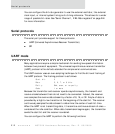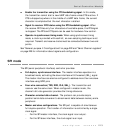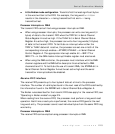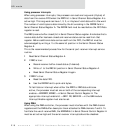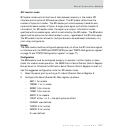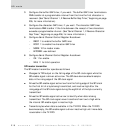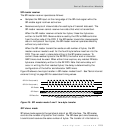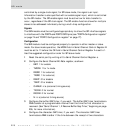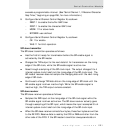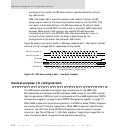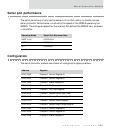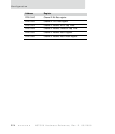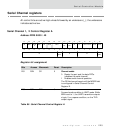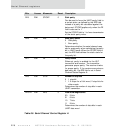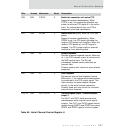
SPI mode
220
NS7520 Hardware Reference, Rev. D 03/2006
controlled by a single clock signal; for SPI slave mode, the signal is an input.
Information transfer is also qualified with an enable signal input, which is controlled
by the SPI master. The SPI enable signal must be active low for data transfer to
occur, regardless of the SPI clock signal. The SPI enable function allows for multiple
slaves to be addressed individually during a multi-drop configuration.
Signals
The GEN module must be configured appropriately to allow the SPI interface signals
to interface with the PORTA and PORTC GPIO pins (see "PORTA Configuration register"
on page 74 and "PORTC Configuration register" on page 77).
Configuration
The SER module must be configured properly to operate in either master or slave
mode. For slave mode operation, the MODE field in Serial Channel Control Register B
must be set to 11 before the CE field in Serial Channel Control Register A is set to 1.
Use this suggested configuration order for SPI slave mode:
1 Reset the serial port by writing a 0 to Serial Channel Control Register a.
2 Configure the Serial Channel Bit-Rate register, as shown:
– EBIT: 1 for enable
– TMODE: 1 for 1x mode
– RXSRC: 1 for external;
– TXSRC: 1 for external;
– RXEXT: 0 for disable
– TXEXT: 0 for disable
– CLKMUX: n/a (external timing source)
– TXCINV: 0 for normal
– RXCINV: 0 for normal
– N: n/a (external timing source)
3 Configure the buffer GAP timer, if you want. The buffer GAP timer terminates a
DMA transfer at a programmable interval from the time the first character is
received. (See "Serial Channel 1, 2 Receive Buffer Gap Timer," beginning on page
255, for more information).
4 Configure the character GAP timer, if you want. The character GAP timer
terminates a DMA transfer if the time between the receipt of two characters



